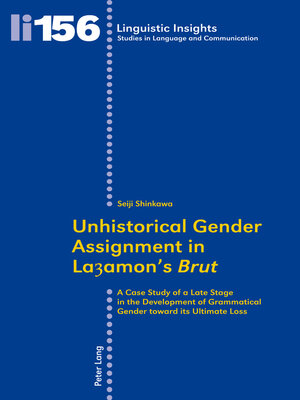Unhistorical Gender Assignment in Layamon's «Brut»
ebook ∣ A Case Study of a Late Stage in the Development of Grammatical Gender toward its Ultimate Loss · Linguistic Insights
By Maurizio Gotti

Sign up to save your library
With an OverDrive account, you can save your favorite libraries for at-a-glance information about availability. Find out more about OverDrive accounts.
Find this title in Libby, the library reading app by OverDrive.



Search for a digital library with this title
Title found at these libraries:
| Library Name | Distance |
|---|---|
| Loading... |
This book explains how and why grammatical gender disappeared from English through a detailed analysis of unhistorical gender assignment within the noun phrase in Layamon's Brut, one of the most important Early Middle English texts. Such deviations do occur capriciously but not randomly, suggesting a development of innovative functions of the attributive forms concerned.
These innovations are mainly of two types: gender-insensitive uses as a case marker and a shift from a bipartite to tripartite system of defining words, the, that, and this. The author discusses these innovations, focusing on their implications for the subsequent development and eventual loss of grammatical gender.
These innovations are mainly of two types: gender-insensitive uses as a case marker and a shift from a bipartite to tripartite system of defining words, the, that, and this. The author discusses these innovations, focusing on their implications for the subsequent development and eventual loss of grammatical gender.







